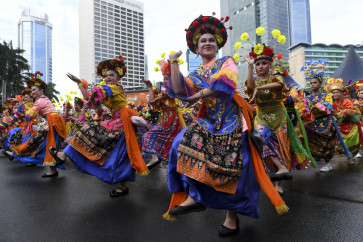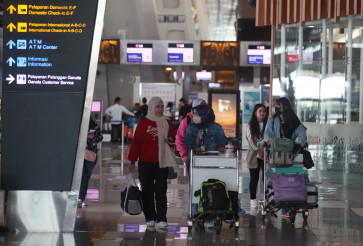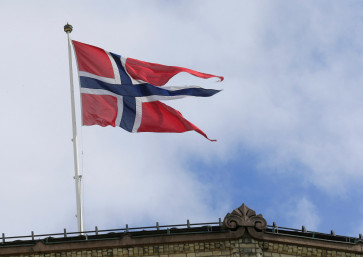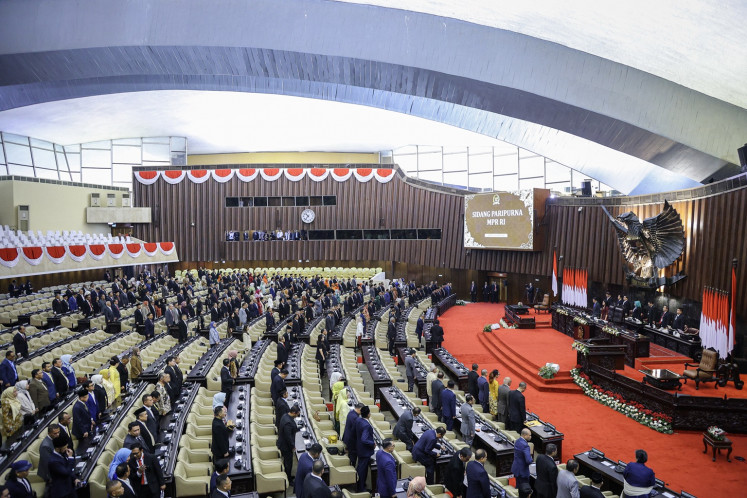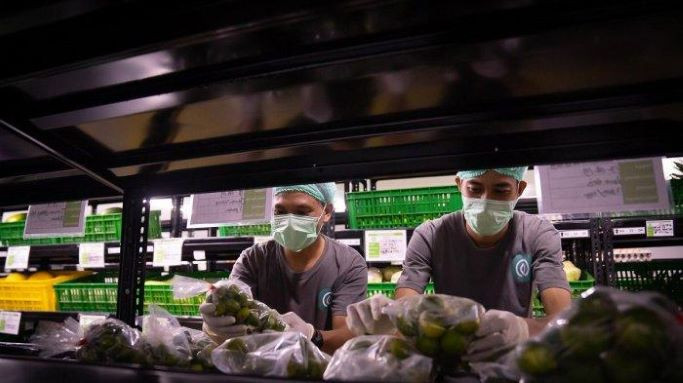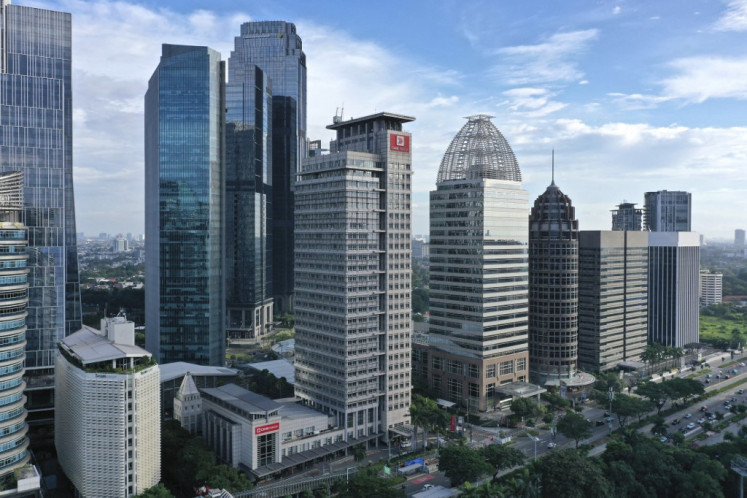Popular Reads
Top Results
Can't find what you're looking for?
View all search resultsPopular Reads
Top Results
Can't find what you're looking for?
View all search resultsDetermining Eastern Indonesia’s hub ports
The logistics and sea transportation sectors in Indonesia are now confused by government officials’ indistinct statements and the issuance of different regulations related to the appointment of international hub ports in Indonesia
Change text size
Gift Premium Articles
to Anyone
T
he logistics and sea transportation sectors in Indonesia are now confused by government officials’ indistinct statements and the issuance of different regulations related to the appointment of international hub ports in Indonesia.
The government has issued several regulations in setting up international hub ports, which include the National Medium-Term Development Plan 2015-2019 issued by the National Development Planning Board (Bappenas) in 2015, the National Logistics System (Presidential Decree No. 26 of 2012) and the National Port Master Plan 2013 (RIPN 2013).
The three regulations decided that Kuala Tanjung and Bitung Port will be international hub ports in the west and the east. For national hub ports, Bappenas has also named additional ports, such as Tanjung Priok, Tanjung Perak and Makassar.
However, RIPN 2016 revised the role of Kuala Tanjung and named Tanjung Priok port in Jakarta and Patimban port in Subang West Java as international hub ports for the west. Even though, recently the President confirmed prioritizing Kuala Tanjung as an international hub port in the west. The transportation minister’s statement, made during a visit to the Port of Bau-Bau, added to the discourse that Bau-Bau could be one of the hub port in the east, connecting the delivery of goods from west to east.
The hub port holds the role of connecting international and national shipping in Indonesia. Thousand Islands hub port is a significant point in the transport network in Indonesia. Good maritime connectivity is essential to boost development, create jobs, lower prices and poverty rates and enhance living conditions. Ports are required to open more markets for most industries and priority needs to be given to ports and shipping.
A hub port in Government Regulation No. 61/2009 has a definition: “a port that functions principally to serve marine transportation activities, transport domestic loads in moderate amounts and serve as a place of origin for passengers and goods as well as provide inter province short-sea shipping.”
Port economic activities, at a strategic level, can be seen from the data of population, regional revenue, incoming cargo and outgoing cargo. Economic activity is a trigger for the existence of trips to and from certain areas so that the above indicators are determinants for the location of the hub port.
Ports serve the transportation of commodities, so industries in the area should be ready to support this. Assessing existing and future industries will enhance the economy of the primary sectors associated with the port.
The strategic location of Bau-Bau meets minimum requirements to becoming a hub port. However, Bau-Bau does not have significant socio-economic advantages in becoming a hub port compared to other eastern Indonesia ports.
In the eastern Indonesia, four major population areas with ports are Makassar (4.9 million), Tenau (2 million), Pare-Pare (1.8 million) and Bitung (1.8 million). Bau-Bau only has 0.9 million people.
Based on regional incomes in the surrounding port area, the rankings in sequence are Makassar (Rp 141.8 trillion), Bitung (Rp 56.7 trillion), Kendari (Rp 44 trillion), Lembar (Rp 40 trillion) and Merauke (Rp 39.4 trillion). Bau-Bau only has Rp 17.3 trillion in regional revenue.
Makassar (5.5 million tons) has the largest outgoing cargo for eastern ports, followed by, Bitung (3.6 million tons), Ambon (1 million tons), Pantoloan (0.5 million tons) and Jayapura (0.5 million tons). The largest incoming cargo at the Makassar port reaches 7 million tons, Bitung (2.2 million tons), Pantoloan (1.3 million tons), Kendari (1.3 million tons) and Jayapura (0.9 million tons). The Bau-Bau port only has incoming cargo of 0.04 million tons and outgoing cargo of 0.5 million tons.
Kendari and Pantoloan have a much higher cargo share than Bau-Bau. This is due to more complete port infrastructures and readiness of the industries in Kendari and Pantoloan. With the lack of demand and economic activity in the port of Bau-Bau, it will be difficult to invite the international shipping players to operate here.
The role of the hub port in terms of international and national collectors is significant in balancing Indonesia’s trading activities from west to east and vice versa.
The investment of port infrastructure must improve to increase its competitiveness in the future. To utilize our port network in an efficient way, in-depth studies of commodity value-chain analysis are needed. People should be able to ensure that the taxes spent on port infrastructure have high social and economic benefits. Thus, government should fairly determine which ports will be a priority for the future development of Indonesia.
________________________
The writer is a transportation consultant at the World Bank and a former researcher of Port of Rotterdam International and Master of Transportation, Infrastructure and Logistics from Technische Universiteit Delft.


